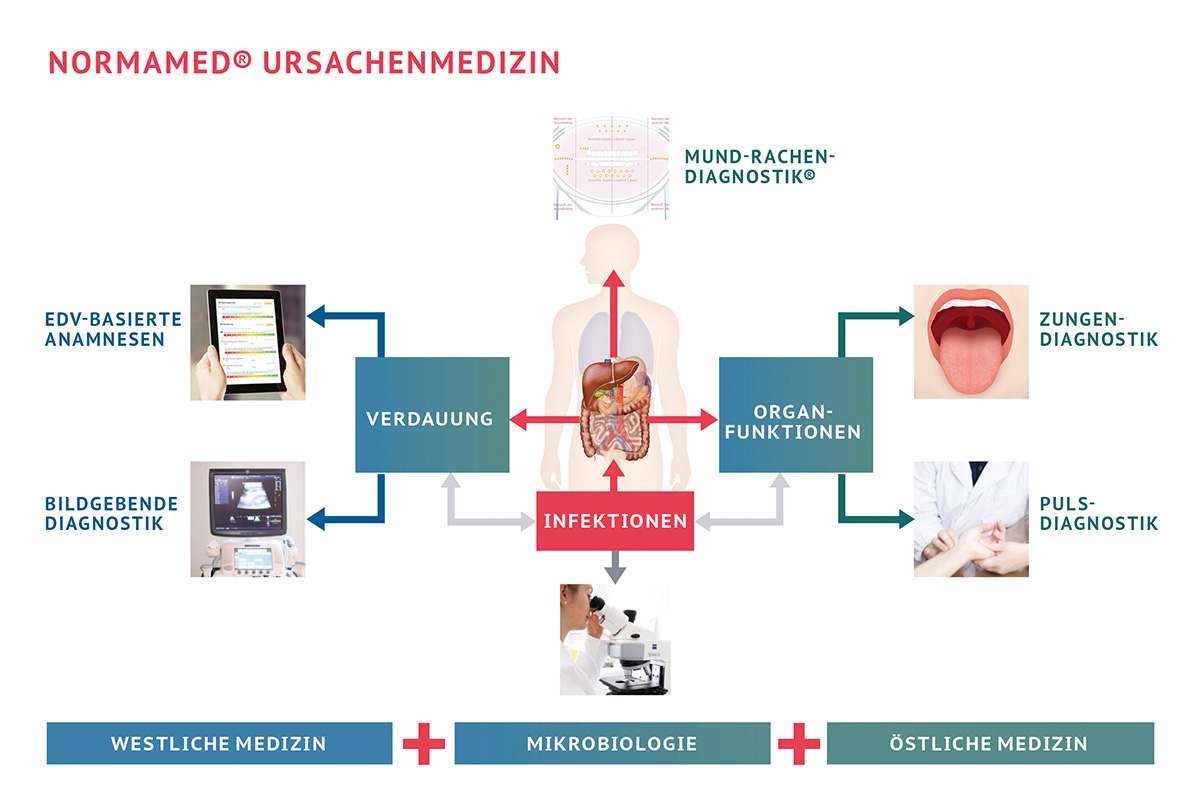Diagnostik und Therapie von H. pylori
Serologische Tests (bestehend aus IgA, IgG, IgM Elisa- und Blot-Tests) lassen sich einfach durchführen. Sie sind schonende (und bei richtiger Verfahrenskombination und richtiger Interpretation) gute Alternativen zur Endoskopie (Magenspiegelung) und zu Biopsien. Sie können Patienten unangenehme Untersuchungen ersparen. Und eine Diagnose ist mit ihnen schnell erstellt.
Zum Ausschluss von Mischinfektionen und zur richtigen Bewertung von Symptomen sollte aber auch die Untersuchung auf pathogene Hefen durchgeführt werden. Diese lassen sich mittels Mundabstrich und Stuhlproben ebenso sehr einfach nachweisen.
Auch die Diagnostik der TCM kann Zusatzinformationen liefern. So ist etwa eine Zunge mit ausgeprägter Kerbe in der Mitte ggf. nicht nur ein Hinweis auf eine gestörte Milzfunktion, sondern häufig auch auf eine Infektion mit Helicobacter pylori und pathogene Hefen.
Therapiert werden die Infektionen oder Mischinfektionen nach erfolgtem Labornachweis und genauer Differenzierung. Beide Erreger haben ein hohes Potenzial für schwere Erkrankungen. Auch weitere Erreger können daran beteiligt sein.
Der Hintergrund sorgfältiger Untersuchungen ist die Vermeidung von Komplikationen, Unverträglichkeiten und Unwirksamkeiten bei einer Therapie mit Antibiotika.
Therapiert werden die Infektionen oder Mischinfektionen nach erfolgtem Labornachweis und genauer Differenzierung. Beide Erreger haben ein hohes Potenzial für schwere Erkrankungen. Auch weitere Erreger können daran beteiligt sein.
Der Hintergrund sorgfältiger Untersuchungen ist die Vermeidung von Komplikationen, Unverträglichkeiten und Unwirksamkeiten bei einer Therapie mit Antibiotika.




